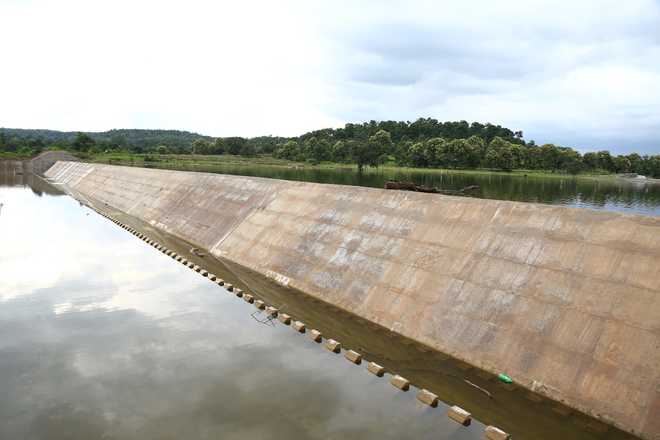Telangana shows the way in restoring village tanks
Suresh Dharur
Tribune News Service
Hyderabad, September 6
A silent transformation is taking place across rural Telangana as the country’s newest state has emerged as a role model in rejuvenating minor irrigation tank system, a lifeline for small and marginal farmers.
“Mission Kakatiya”, a flagship programme of the Telangana Rashtra Samithi (TRS) government to restore centuries-old village tanks through people’s participation, has earned appreciation from the Union Water Resources Ministry for setting an example in reviving the defunct chain of tanks.
Christened as “Mana Ooru-Mana Cheruvu” (Our Village-Our Tank), the project aims at restoring over 46,500 tanks across the state at a cost of Rs 20,000 crore over five years to create a storage capacity of 255 TMC of water.
Defunct for decades, several tanks are now brimming with water, bringing smiles on the faces of farmers as the project is expected to boost agricultural production by at least 30 per cent, increase groundwater recharge and drinking water availability and improve the soil quality.
A visit to a few tanks under restoration in Adilabad, a backward and tribal-dominated district bordering Maharashtra, revealed a discernible change and a new sense of optimism among farmers with tanks in their villages brimming with water, enough to irrigate their crops. “Farmers growing paddy and turmeric here are now assured of water availability for the entire crop season of 120 days,” said Shivaiah, sarpanch of Parimandal village.
“People are actively taking part in the programme as they see benefit in the area of irrigation, improved groundwater recharge and drinking water facility. Besides, the silt, removed from the tanks, has high nutrient value and its usage will help farmers save on fertilisers and pesticides,” Sridhar Rao Deshpande, Officer on Special Duty to the Irrigation Ministry, told The Tribune.
Under the first phase, completed in April, over 8,000 tanks have been restored at a cost of Rs 1,600 crore. Another 9,000 tanks were taken up under the second phase during the current financial year.
The project involves desilting the tanks, repairing the bunds, clearing catchment area and feeder channels of encroachments, repairing damaged sluices and surplus structures and laying canals up to the fields. Many of these tanks were built during the Kakatiya dynasty, over 800 years ago. A chain of interconnected rain-fed tanks, whose flow depended on gravity, were developed and canals were built from these lakes to supply water to the fields. However, they have become defunct over time.
The experts say that over the years, yields have come down drastically in the upland Telangana because of decreasing reliance on tank irrigation and rampant exploitation of groundwater resources. The National Bank for Agriculture and Rural Development (Nabard) has released Rs 1,000 crore for the programme and has shown its willingness to provide another Rs 1,000 crore.
Prime Minister Narendra Modi made a specific mention of the project during his recent visit to the state. “We have also approached NITI Aayog for Rs 5,000 crore assistance,” the irrigation official said. “In the combined state of Andhra Pradesh, the successive governments had completely neglected minor irrigation sector in Telangana. We are now correcting the situation through people’s involvement. This mission will go down in the history as the biggest project of its kind ever undertaken in the country,” state Irrigation Minister T Harish Rao said.
The government is roping in Telangana diaspora to adopt the village tanks and donate for restoration works. So far, Rs 17.09 crore donations have been received.
In the 2015-16 budget, Rs.2,083 crore has been earmarked for the project. “Initially, people were sceptical in view of their past experience but after seeing the results, their aspirations have gone up and there is enthusiasm all around,” Adilabad district Collector M Jagan Mohan said.









